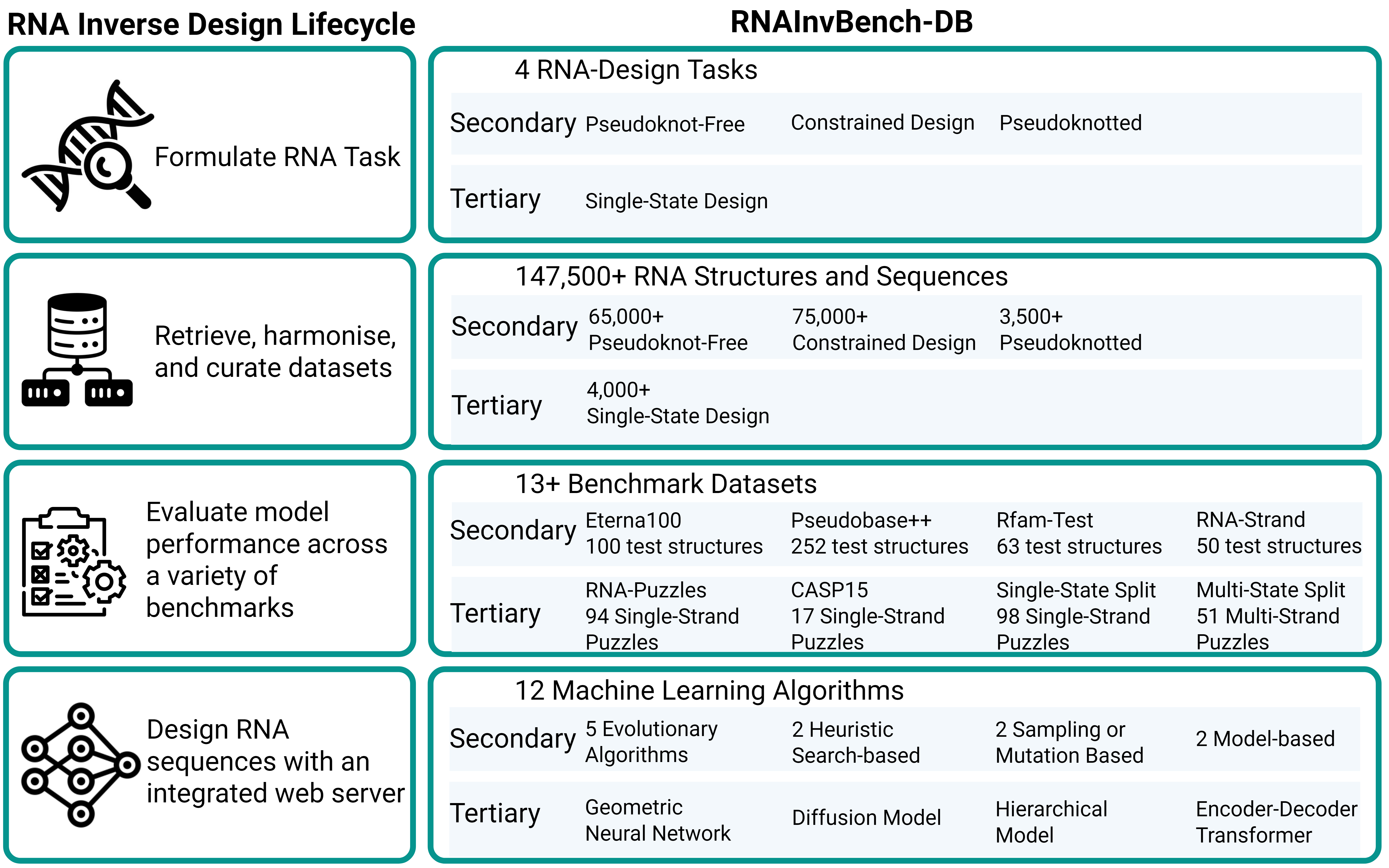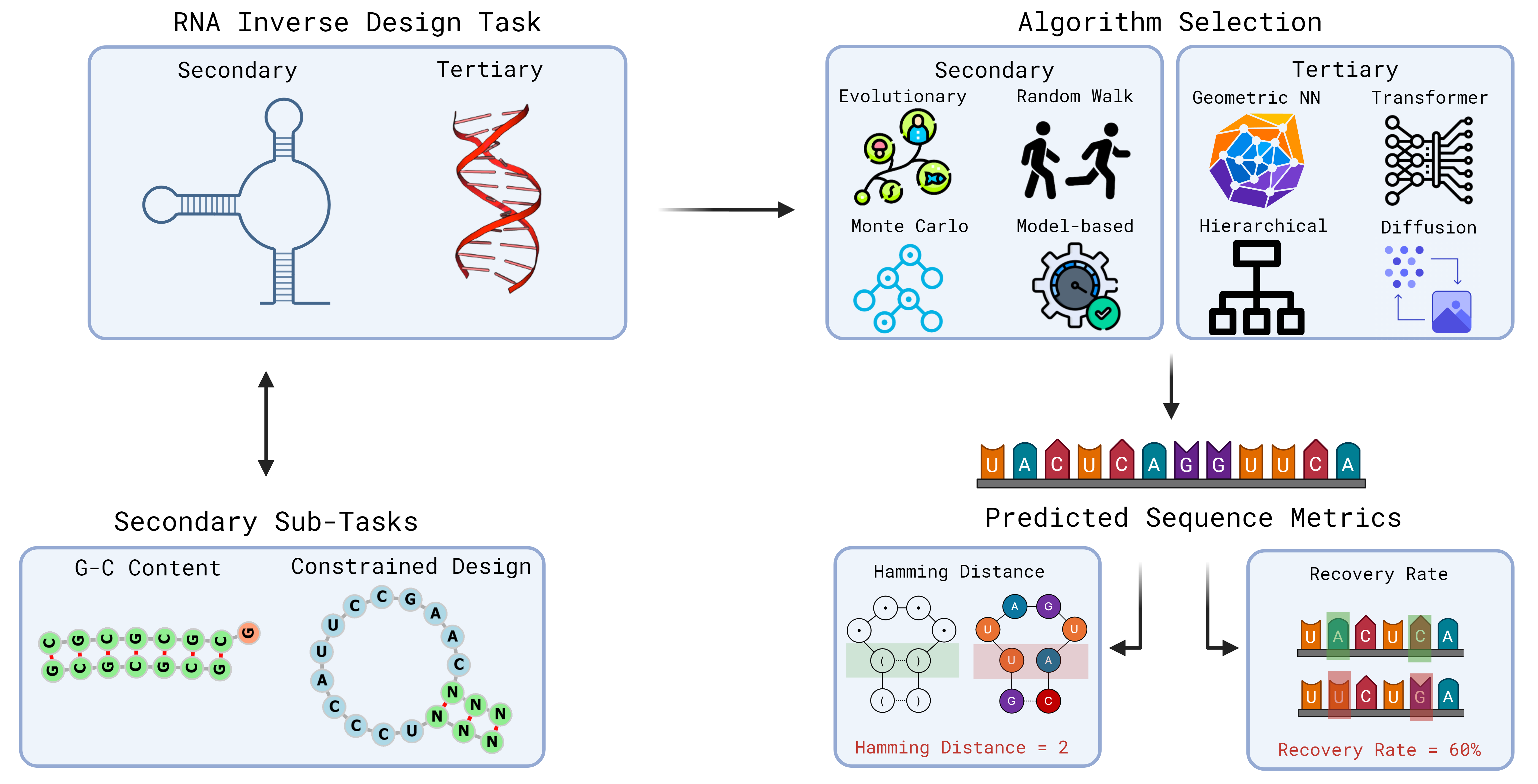Welcome to RNAInvBench-DB
RNAInvBench-DB is an open-source database and web server providing diverse, curated benchmarks and baseline algorithms for RNA inverse design, covering both secondary and tertiary structures.
Overview of RNAInvBench-DB

An overview of the RNAInvBench framework, and the four key modules within. These are: tasks and sub-tasks within RNA inverse design; the database, consisting of a comprehensive set of structure and sequence pairings for training and benchmarking; the web server, comprised of 12 machine learning algorithms for fast, efficient inverse design.
RNAInvBench-DB
What is RNA inverse design?
RNA inverse design begins with a known secondary or tertiary structure, and is the process of reverse-engineering this structure back into an RNA sequence. The design part is based on optimising the RNA sequence, through key metrics such as G-C Content % for maximising or minimising translation efficiency, lower Minimum Free Energy (MFE) for enhanced sequence robustness, and constrained design, designing RNA sequences with key motifs. RNA inverse design has been applied to numerous biological appications, such as creating artificial RNA molecules designed for a specific function (e.g., artificial ribozymes, miRNAs, or riboswitches) RNA coding/transcript optimisation, and in RNA-based therapeutic design.
What is RNAInvBench-DB?
RNAInvBench-DB represents the open-source data resource database and web server, packaged as part of RNAInvBench, designed to improve the development and applicability of RNA inverse design methods for both secondary and tertiary structures.
Overview of RNAInvBench-DB
Aside from the database, we also include an integrated web-server to allow for direct applicability of RNA inverse design methods. We provide a schematic overview, illustrating the two primary inverse design tasks, a key metric returned post-design, as to allow users to estimate algorithm performance, and the types of algorithms available within the web service.

Key Features
Covers both secondary and tertiary design. Secondary design consists of four core secondary structure-based tasks, including pseudoknot-free, pseudoknot-inclusive, and constrained design challenges, whereas tertiary design consists of reverse-engineering a 3D RNA structure back into an RNA sequence.
We provide easy access to a large collection of RNA secondary and tertiary inverse folding algorithms through an integrated web server. This provides easy access to RNA inverse design resources for application-based researchers.
Our datasets cover a wide range of RNA inverse folding challenges, including large pseudoknot-free and pseudoknot-inclusive secondary structure sets (like Rfam-Learn-Train, TR0, Eterna100v2, and Pseudobase++), as well as curated tertiary structure benchmarks from RNAsolo, RNA Puzzles, and CASP15.
Who is RNAInvBench-DB for?
-
Researchers developing novel inverse RNA design methods
-
Computational biologists seeking standardized, diverse benchmarks
-
Bioinformaticians working on RNA structure prediction and design
-
Developers integrating or comparing RNA design algorithms
Where should I start?
Visit the Data overview, which details the types of data available for RNA inverse design.
Check out the Web Server, where you can use several of the integrated RNA inverse design methods through the web interface!
Explore our Tutorials for tips on integrating RNA inverse design into your processes.
The complete code-base is open-sourced on GitHub!